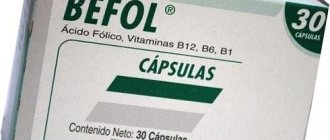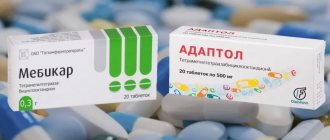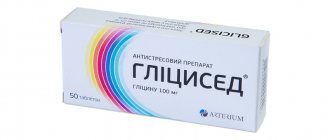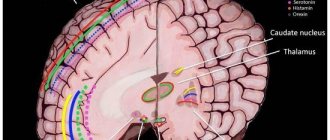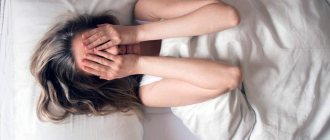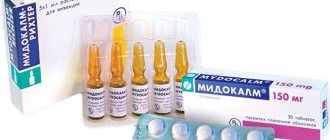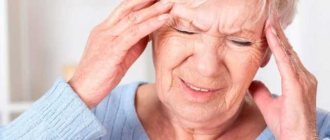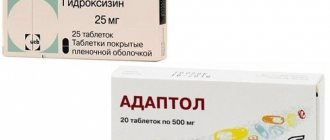Zopiclone is a sleeping pill[edit | edit code]
Tablets Imovan N20 Comparison of zopiclone with zoliplone Zopiclone, table.
7.5 mg Zopiclone
Zopiclone is a non-benzodiazepine sleep aid (Z-drugs) used in the treatment of insomnia. Available in pharmacies under the brand name Imovan, Somnol, Piklodorm. A new generation non-benzodiazepine hypnotic with minimal effect on sleep structure.
An analysis of clinical trial data submitted to the FDA for the Z-drugs found that these sedative-hypnotics more than doubled the risk of developing depression compared with placebo.[1]
Zopiclone causes benzodiazepine-like changes in electroencephalography and sleep architecture, and also causes disturbances in sleep patterns upon discontinuation, as a rebound effect. The group of non-benzodiazepine hypnotics also includes its full analogs zaleplon (Sonata) and eszopiclone (Lunesta), but they do not have any advantages and are less common.[2][3]
During the process of accommodation, active metabolites are formed: N-oxide of zopiclone and N-demethyl zopiclone, the identification of which helps to establish the cause of death of suicidal patients. Zopiclone has become one of the favorite drugs of drug addicts for making “mixes.”[4] Considering a person in a weakened physical condition, 90 mg may represent the minimum lethal dose of zopiclone.[5]
Zopiclone is intended solely to help you fall asleep. The drug has a short half-life of about 3 hours, and therefore it is possible to maintain the normal structure and productivity of sleep. Does not cause post-somnia disorders: there are no feelings of weakness and drowsiness the next morning. Repeated doses of zopiclone are not accompanied by accumulation. Zopiclone causes significantly fewer side effects compared to classical sleeping pills used in Russia.
Acquisition[edit | edit code]
Available only with a doctor's prescription. Average price for 20 tablets: Imovan - 300 rubles, Somnol - 200 rubles. To obtain a prescription, you must contact a neurologist or psychotherapist if you complain about problems falling asleep. It must be emphasized that instead of conventional tranquilizers, you would prefer a safer and more effective remedy. You should tell your doctor if you have already taken conventional herbal sedatives such as valerian and motherwort extracts and they do not help you. After this, you will most likely be offered the over-the-counter drug hydroxyzine (aka Atarax).
Keep in mind that an experienced doctor will not write you a prescription for zopiclone without a relevant medical history or simply at your request. Zopiclone is included in the list of potent drugs[6], and is also a registered drug in pharmacies.[7]
Use for insomnia[edit | edit code]
Currently, non-benzodiazepine hypnotics are the optimal choice for the non-systematic treatment of insomnia. The pathoetiology of insomnia is still not fully understood and there are no effective treatments. Sleeping pills do not cure this disease; moreover, after discontinuation of pharmacotherapy, the symptoms of sleep disturbance may worsen. Treatment must be prescribed by a specialist.
If insomnia is temporary and caused by external factors (stress, overload, etc.), then the use of sleeping pills on an intermittent basis is completely justified. This makes it easier to restore the correct daily routine, especially after the holidays. Or they allow you to quickly suppress disturbing thoughts.
Dosage[edit | edit code]
The average therapeutic dose is 7.5 mg orally at night; in cases of severe insomnia, the dose can be increased to 15 mg. The action begins in 20-30 minutes. In elderly patients, as well as in cases of impaired liver function, 3.75 mg is used. Can cause addiction and withdrawal syndrome with aggravation of insomnia, therefore, according to the recommendations of Compendium of Pharmaceuticals and Specialties, it should not be used for more than 7-10 days in a row, according to official instructions no more than 45 days.
Compound
active ingredient:
zopiclone;
1 tablet contains zopiclone (based on 100% zopiclone content) – 7.5 mg;
Excipients:
lactose, monohydrate; microcrystalline cellulose; potato starch; povidone; anhydrous colloidal silicon dioxide; talc; magnesium stearate.
Dosage form.
Pills.
Basic physical and chemical properties:
solid regular, round cylinders, the upper and lower surfaces of which are flat, the edges of the surfaces are beveled, with a dash for division, white or white with a creamy tint.
Pharmacotherapeutic group.
Sleeping pills and sedatives. ATX code N05C F01.
Dependency[edit | edit code]
Zopiclone, a benzodiazepine-like drug, was initially presented as having a reduced risk of dependence and withdrawal symptoms compared with traditional benzodiazepine drugs. In reality, however, zopiclone may have a slightly greater addiction potential than benzodiazepines.
.[8][9][10] Tolerance to the effects of zopiclone may develop over several weeks. In most cases, long-term use of the drug should be avoided. Successful treatment of patients with severe insomnia due to anxiety can be achieved within a few months. Abrupt cessation, especially when taking high doses of the drug over a long period of time, can cause seizures and delirium in severe cases.[11][12]
Publications in the British Medical Journal provide no evidence that zopiclone has a low potential for addiction. In fact, physical dependence, abuse, and withdrawal symptoms similar to those observed with benzodiazepine withdrawal often occur with the drug. Withdrawal symptoms include restlessness, tachycardia, tremors, sweating, hot flashes, palpitations, derealization, and later insomnia.[13] Withdrawal seizures have also been reported during Zopiclone detoxification, however in this case the person was abusing high doses of Zopiclone.
The risk of developing dependence when taking zopiclone for less than 2 weeks or less is very low.[14] However, this is disputed by one study of low-dose zopiclone taken over 7 nights. Stopping zopiclone has been found to cause a relapse of insomnia. Additionally, when midazolam was discontinued after continuous use for 7 nights, no relapse of insomnia was observed, suggesting that zopiclone may cause more significant problems of tolerance and dependence than benzodiazepines.[15] After 3 weeks of use, mild to moderate symptoms of relapse occur when zopiclone is stopped. Due to the risk of developing tolerance and physical dependence, zopiclone is recommended to be used for a short period of time (maximum 1-4 weeks), or, conversely, to rarely use the drug for long periods of time.[16]
Long-term users of Zopiclone who have become physically dependent on the drug should not abruptly stop taking the substance as severe withdrawal symptoms such as delirium may be associated with it.[17] If zopiclone has been taken for several weeks or more, stopping the drug should be done by gradually reducing the dose or switching to an equivalent dose of diazepam (Valium), which has a much longer half-life, making withdrawal easier, and then gradually over several months. reduce the dosage to avoid the development of extremely severe and unpleasant withdrawal symptoms (such as internal restlessness, psychomotor agitation, abdominal pain, hypertension, hallucinations, seizures, anxiety, depression, psychosis, etc.), which can last up to two years if the drug is stopped too abruptly.[18][19][20] After 4 weeks of using zopiclone at night, some users develop daytime anxiety associated with stopping the drug. This symptom, however, does not occur as intensely as with triazolam, which has a much shorter duration of action and produces more severe symptoms of daytime withdrawal anxiety in long-term users.[21] According to the World Health Organization, Zopiclone, although not molecularly a benzodiazepine, is capable of binding non-selectively and with high affinity to the same benzodiazepine binding site as benzodiazepines. The World Health Organization has also stated that zopiclone is cross-tolerant with benzodiazepines and these drugs may be interchangeable.[22]
Carcinogenicity[edit | edit code]
A recent analysis of US FDA data and clinical trial results suggests that non-benzodiazepine Z-drugs, at prescribed doses, are associated with an increased risk of cancer.
in people. There were 15 epidemiological studies that showed that sleeping pills increased the risk of mortality, mainly due to increased mortality from cancer (brain, lung, bowel, breast and bladder). One possible explanation for the increase in cancer deaths is that Z-drugs have a negative effect on the immune system. The fact that increased disease rates were observed in clinical trials in patients taking other Z-drugs (zolpidem, zaleplon, and eszaleplon) may support this theory. Indiplon, another nonbenzodiazepine drug, also demonstrated an increased risk of cancer in clinical trials. The review concluded: “The risk of developing cancer is significant and physicians and patients should be aware that hypnotics may increase a patient's risk of developing cancer.”[23]
Cases of overdose
If the dosage was intentionally or accidentally violated, the following disorders may occur:
- from the gastrointestinal tract : a feeling of bitterness in the mouth, a metallic taste, dryness of the mucous membranes of the oral cavity and dyspeptic disorders;
- from the central nervous system : severe headache, dizziness and loss of consciousness, memory loss (anterograde form), hallucinations, nightmares and confusion;
- from dermatological manifestations : skin rash of various localization, pinpoint and spotty forms.
The amount of the drug required for the occurrence of adverse reactions is purely individual and depends on the compensatory capabilities of the body.
Sources[edit | edit code]
- https://www.ncbi.nlm.nih.gov/pmc/articles/PMC1994947/
- https://www.ncbi.nlm.nih.gov/pubmed/2306331
- https://www.ncbi.nlm.nih.gov/pubmed/8880074
- https://neuroleptic.ru/forum/topic/4992-z-%D0%BF%D1%80%D0%B5%D0%BF%D0%B0%D1%80%D0%B0%D1%82%D1 %8B/page-4
- Meatherall RC Zopiclone fatality in a hospitalized patient // Journal of forensic sciences. – 1997. – T. 42. – No. 2. – pp. 340-343.
- https://www.rg.ru/2008/01/16/veshestva-dok.html
- https://www.rg.ru/2006/01/20/recept-dok.html
- Bramness JG; Olsen H. (1998). "". Tidsskrift for den Norske laegeforening. 118(13):2029–32. PMID 9656789.
- Luty S, Sellman D (July 1993). "Imovane—a benzodiazepine in disguise." NZ Med. J. 106 (959): 293. PMID 8321452.
- Deveaux M, Chèze M, Pépin G (April 2008). "The role of liquid chromatography-tandem mass spectrometry (LC-MS/MS) to test blood and urine samples for the toxicological investigation of drug-facilitated crimes." Ther Drug Monit 30(2):225–8. doi:10.1097/FTD.0b013e3181676186. PMID 18367985.
- "Hypnotic dependence: zolpidem and zopiclone too." Prescrire Int 10 (51): 15. February 2001. PMID 11503851.
- Wong CP, Chiu PK, Chu LW (September 2005). “Zopiclone withdrawal: an unusual cause of delirium in the elderly” (PDF). Age Aging 34(5):526–7. doi:10.1093/ageing/afi132. PMID 16107464.
- Jones IR, Sullivan G (January 1998). "Physical dependence on zopiclone: case reports." BMJ 316(7125): 117. doi:10.1136/bmj.316.7125.117. PMC 2665371. PMID 9462317.
- Anderson, Aa (1987). "Zopiclone and nitrazepam: a multicenter placebo controlled comparative study of efficacy and tolerance in insomniac patients in general practice." Sleep. 10 Suppl 1: 54–62. ISSN 0161-8105. PMID 3326116.
- Begg, Ej; Robson, Ra; Frampton, Cm; Campbell, Je (Oct 1992). "A comparison of efficacy and tolerance of the short acting sedatives midazolam and zopiclone.". The New Zealand medical journal 105 (944): 428–9. ISSN 0028-8446. PMID 1297939.
- Dorian, P; Sellers, Em; Kaplan, H; Hamilton, C (1983). "Evaluation of zopiclone physical dependence liability in normal volunteers." Pharmacology. 27 Suppl 2: 228–34. doi:10.1159/000137931. ISSN 0031-7012. PMID 6669632.
- Harter C, Piffl-Boniolo E, Rave-Schwank M (November 1999). "". Psychiatr Prax (in German) 26 (6): 309. PMID 10627964.
- sanofi-aventis Canada Inc (October 30, 2008). "IMOVANE (zopiclone) Tablets, 5.0 mg and 7.5 mg" (PDF).
- Kahlert I; Brune M (June 2001). "". Dtsch Med Wochenschr 126(22):653–4. doi:10.1055/s-2001-14488. PMID 11450624.
- Professor Heather Ashton. "BENZODIAZEPINES: HOW TO WORK AND HOW TO WITHDRAW."
- Fontaine, R; Beaudry, P; Le, Morvan, P; Beauclair, L; Chouinard, G (Jul 1990). "Zopiclone and triazolam in insomnia associated with generalized anxiety disorder: a placebo-controlled evaluation of efficacy and daytime anxiety." International clinical psychopharmacology (PDF) 5 (3): 173–83. doi:10.1097/00004850-199007000-00002. ISSN 0268-1315. PMID 2230061.
- WHO (2006). "World Health Organization - Assessment of Zopiclone" (PDF). who.int.
- Kripke, Daniel F (2008). "Evidence That New Hypnotics Cause Cancer" (PDF). Department of Psychiatry, UCSD (University of California). the likelihood of cancer causation is sufficiently strong now that physicians and patients should be warned that hypnotics possibly place patients at higher risk for cancer. https://escholarship.org/uc/item/12r2f32g#page-8

